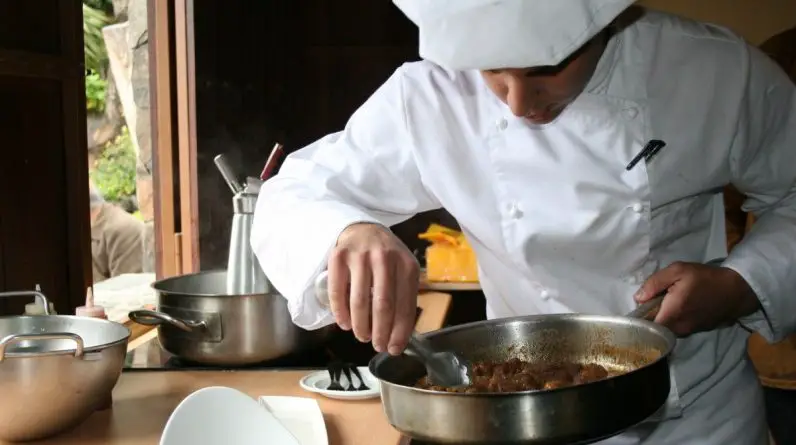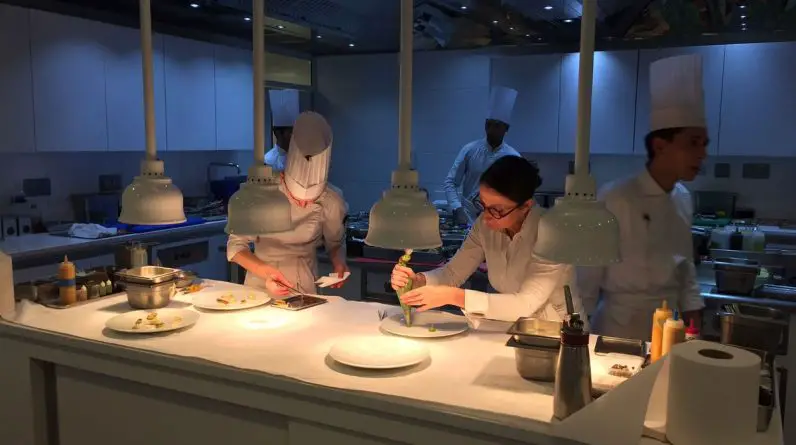Crafting can be a rewarding and enjoyable activity, but achieving high-quality results requires a combination of the right materials, techniques, and environment. This article provides essential tips to help you perfect your homemade crafts, from selecting the best materials to leveraging modern technology. Whether you’re a beginner or an experienced crafter, these insights will enhance your crafting experience and improve the quality of your projects.
Contents
- 1 Choosing the Right Materials
- 2 Mastering Basic Techniques
- 3 Incorporating Advanced Skills
- 4 Design and Aesthetics
- 5 Time Management for Crafting
- 6 Maintaining a Creative Environment
- 7 Leveraging Technology in Crafting
- 8 Conclusion
- 9 Frequently Asked Questions
- 9.1 What are the best materials to start with for a beginner in crafting?
- 9.2 How can I ensure my measurements and cuts are accurate?
- 9.3 What are some tips for choosing colors that work well together?
- 9.4 How can I make my crafting process more efficient?
- 9.5 What are some ways to keep my crafting space inspiring and organized?
- 9.6 How can technology enhance my crafting experience?
Key Takeaways
- Select high-quality, appropriate materials for better durability and aesthetics.
- Master basic crafting techniques to ensure precision and professionalism in your projects.
- Incorporate advanced skills and experiment with design to create unique and complex items.
- Plan and manage your crafting time efficiently to balance productivity and personal life.
- Maintain an organized and inspiring crafting space to boost creativity and ensure safety.
Choosing the Right Materials

Understanding Material Properties
Selecting the right materials is crucial for the success of your crafts. Understanding the properties such as durability, flexibility, and weight can significantly influence the final product. For instance, choosing a more durable material like leather or metal might be ideal for items that require longevity.
Sources for Quality Supplies
Finding high-quality supplies is essential. Local craft stores and online marketplaces are great sources, but always check reviews and possibly request samples before making large purchases. Consider the reputation of the supplier to ensure you’re getting the best materials for your money.
Eco-Friendly Options
In today’s crafting world, using eco-friendly materials is not just a trend but a responsibility. Look for supplies that are sustainably sourced and have minimal impact on the environment. Options like recycled fabrics or biodegradable beads can help reduce your craft’s ecological footprint while still providing high quality and beautiful results.
Mastering Basic Techniques

Cutting and Measuring Accurately
Accuracy in cutting and measuring is fundamental to the success of any craft project. Ensure all measurements are precise to avoid material wastage and achieve professional-looking results. Use tools like rulers, calipers, and templates to aid in this process.
Joining and Assembling
Effective joining and assembling techniques are crucial for the structural integrity of your crafts. Techniques vary from simple gluing to more complex soldering, depending on the materials involved. It’s important to choose the right adhesive or technique for the materials you are working with.
Finishing Touches
The final steps in crafting can greatly enhance the appearance and durability of the project. Consider using sealants or finishes to protect your work. Experimenting with different textures and colors can also add a unique touch to your crafts, making them stand out.
Remember, mastering these basic techniques is essential for advancing to more complex crafting skills.
Incorporating Advanced Skills

Working with Complex Patterns
Complex patterns can elevate your crafts, but they require precision and creativity. Mastering these patterns involves understanding their geometry and the interplay of colors and textures. It’s crucial to practice with simpler designs before attempting more intricate ones.
Using Specialized Tools
Specialized tools, such as laser cutters or engraving machines, can significantly enhance the quality and uniqueness of your crafts. Familiarize yourself with each tool’s capabilities and safety features to fully leverage their potential. Remember, the right tool can make a complex job much simpler.
Experimenting with Textures
Experimenting with different textures can add depth and interest to your projects. Techniques like embossing, weaving, or layering materials can create tactile experiences that make your crafts stand out. Start with basic textures and gradually incorporate more diverse and challenging ones to keep your projects exciting and engaging.
Design and Aesthetics

Color Theory and Combinations
Understanding color theory is crucial for creating visually appealing crafts. Choosing the right color combinations can enhance the overall impact of your project. Consider using a color wheel as a guide to select complementary, analogous, or triadic colors.
Balancing Form and Function
While aesthetics are important, the functionality of your craft should not be compromised. Aim for a balance where form meets function, ensuring that each piece is not only beautiful but also practical and usable.
Personalizing Your Projects
Adding personal touches to your crafts can make them more meaningful and unique. Experiment with different textures, patterns, and materials to reflect your personal style or the intended recipient’s tastes. This customization makes each piece distinctly yours.
Time Management for Crafting

Effective time management is crucial for maximizing productivity and enjoyment in crafting. By planning and organizing your crafting time, you can ensure that your projects are completed efficiently without compromising on quality or creativity.
Planning Your Project Timeline
Develop a clear timeline for each project to avoid last-minute rushes and ensure a smooth crafting process. Break down the project into manageable tasks and set realistic deadlines for each phase. This structured approach helps in tracking progress and making timely adjustments.
Efficient Crafting Techniques
Incorporate efficient crafting techniques to save time without sacrificing the quality of your crafts. Techniques such as batch processing (working on multiple pieces of the project at once) and using quick-drying materials can significantly reduce crafting time.
Balancing Crafting with Daily Life
Crafting should be a fulfilling part of your life, not a source of stress. Set aside dedicated crafting time while ensuring it harmoniously fits with your daily responsibilities. This balance is key to enjoying crafting as a sustainable and rewarding hobby.
Maintaining a Creative Environment

Organizing Your Crafting Space
Organization is key to maintaining a productive crafting environment. Consider using labeled bins, shelves, and drawers to keep materials and tools easily accessible. A clutter-free space not only enhances efficiency but also keeps your creative juices flowing.
Inspiring Creativity in Your Workspace
Creating an environment that stimulates creativity is crucial. Incorporate elements that inspire you, such as motivational posters, your favorite colors, or even a small plant. A well-lit, personalized space can significantly boost your creative output.
Health and Safety in Crafting
Crafting can involve materials and tools that pose potential risks. Ensure your workspace is well-ventilated, especially if you’re working with chemicals or materials that emit fumes. Keep a first aid kit handy and familiarize yourself with basic safety procedures to prevent accidents.
Leveraging Technology in Crafting

Using Design Software
Modern crafting has been revolutionized by the introduction of design software, allowing crafters to visualize and modify their projects with precision before they even begin. Software tools range from simple drawing applications to advanced 3D modeling programs, each tailored to different types of crafting projects. Utilizing these tools can significantly reduce errors and enhance the quality of the final product.
Online Resources and Communities
The internet is a treasure trove of information and inspiration for crafters. From detailed tutorials to vibrant crafting communities, online platforms offer invaluable support and knowledge sharing. Engaging with these communities can provide feedback, new ideas, and even partnerships for collaborative projects. It’s essential to leverage these resources to stay updated and inspired.
Innovative Crafting Gadgets
The market is continually introducing new gadgets that can add efficiency and novelty to your crafting process. From cutting-edge cutting machines to smart sewing devices, these gadgets often integrate seamlessly with design software to provide a streamlined crafting experience. Exploring these tools can open up new possibilities in crafting, making complex projects more manageable and enjoyable.
In the realm of crafting, leveraging technology can transform your creative projects into masterpieces. From innovative tools to digital design platforms, the possibilities are endless. Dive deeper into the world of tech-enhanced crafting on our website and discover how to elevate your crafting skills to new heights. Visit us now for more insights and inspiration!
Conclusion
In conclusion, perfecting your homemade crafts involves a blend of creativity, skill, and attention to detail. By following the essential tips outlined in this article, you can enhance your crafting techniques and create more polished and professional-looking items. Remember to choose the right materials, practice your skills regularly, and always be open to learning and experimenting. With patience and persistence, you can elevate your crafting hobby to new heights and derive even greater satisfaction from your handmade creations.
Frequently Asked Questions
What are the best materials to start with for a beginner in crafting?
Beginners should start with versatile and forgiving materials such as paper, felt, or simple fabrics. These materials are affordable and easy to manipulate, making them ideal for learning basic techniques.
How can I ensure my measurements and cuts are accurate?
Using tools like a ruler, measuring tape, and a square can help ensure accuracy. Additionally, marking your measurements clearly and double-checking before cutting can prevent mistakes.
What are some tips for choosing colors that work well together?
Understanding the basics of color theory can be helpful. Complementary colors (opposite each other on the color wheel) or analogous colors (next to each other on the color wheel) generally work well together.
How can I make my crafting process more efficient?
Organize your workspace and keep your tools and materials within easy reach. Plan your projects in advance and break them down into manageable steps. Also, consider using templates or patterns to save time.
What are some ways to keep my crafting space inspiring and organized?
Keep your space tidy and designate storage areas for different materials and tools. Decorate your space with items that inspire you, such as artwork or color palettes, and ensure good lighting.
How can technology enhance my crafting experience?
Technology can offer many benefits, such as access to online tutorials, communities for support and inspiration, and design software to help with planning and visualizing projects.







